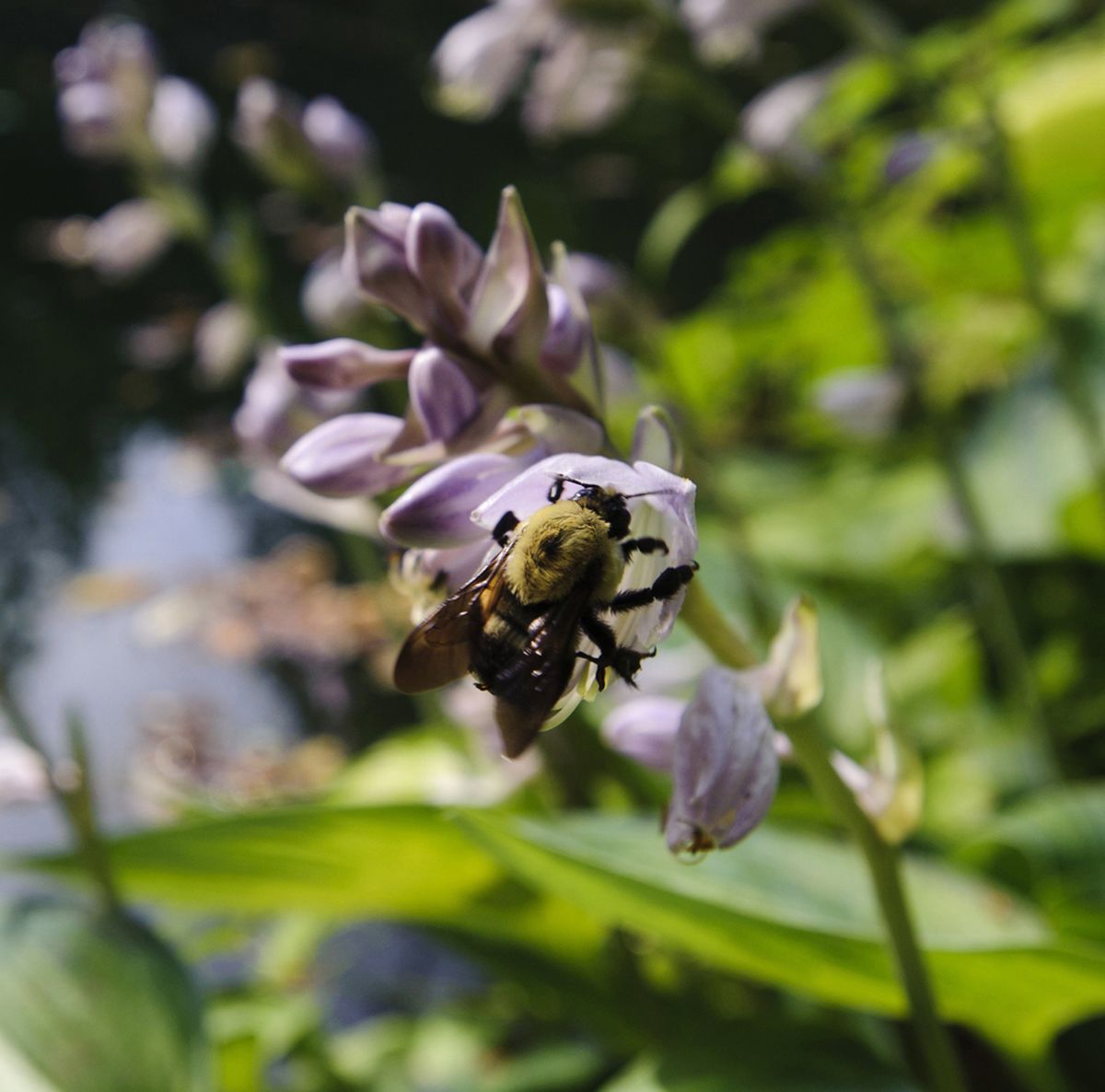Lush Ohme Gardens almost look out of place in arid Wenatchee

WENATCHEE – As a boy growing up in the flatlands of Illinois, Herman Ohme pictured the Pacific Northwest as a lush corner of the country covered with the kind of evergreen trees he saw only at Christmastime.
Alpine lakes, temperate rain forests and mountain scenery figured into his vision when advice from a doctor to spend more time outdoors led him in 1910 to Wenatchee in Central Washington, a dry, desert area separated by the Cascade Mountains from the wetter, western part of the state.
Instead of the tall cedars and firs he saw in picture books, he found a barren landscape covered with sagebrush, dry grass and rocks.
With his new wife, Ruth, who grew up in the nearby town of Dryden, he bought 40 acres in 1929, including an apple orchard and a rock-strewn bluff overlooking the Columbia River.
“One fall day, while looking westward toward the Cascade Mountains, marveling at the incredible view, Herman turned to his new bride and said, ‘You know, this spot could be made as beautiful as those mountains over there,’ ” writes Mike Short in a new book, “Ohme Gardens: Alpine Wonderland” (Cascade Graphics & Printing, $9.99).
Standing on the 600-foot-tall bluff, looking west to the snow-capped Cascades, the couple began making plans to turn the patch of desert landscape into an alpine forest.
“They wanted to re-create what it was like to live in the mountains, right here,” says Short, the longtime manager of Ohme Gardens, now a Chelan County park.
The result: a 9-acre outdoor museum shaded by 90-year-old pines, cooled by a mountain “lake” and carpeted with colorful wildflowers.
Short led me along a steep path to a log-built lookout 600 feet above the Columbia, where we spotted two bighorn sheep scampering up a rocky hillside.
“This is what they started with,” he said. “People … in town thought they were crazy. It was considered wasteland.”
Like most property owners, the Ohmes wanted to build a house, but the year was 1929 and the banks weren’t loaning money.
“This,” Short said, “was going to be their backyard.”
Herman started with a small rock garden and 25 poplar trees. On weekends, Short said, the Ohmes drove their Studebaker into the mountains and loaded it with young evergreens, ferns and shrubs to take home and transplant.
In an area where summer temperatures sometimes top 100 degrees, skeptics predicted the plants would be dead in a few weeks. Yet nearly everything grew, first with the help of water hauled up from the river valley in five-gallon milk cans and later with an elaborate irrigation system Ohme built to pump water into the site from the orchard.
Next came waterfalls built into the rocks, reflecting pools, and shelters made with gnarled logs. Chairs were carved from tree stumps and tables fashioned from electrical-cable spools.
“They weren’t like the Butcharts (patrons of Butchart Gardens in Victoria, B.C.), a family with a lot of wealth,” Short says.
Flagstones hauled first from the banks of the Columbia, or pried from the hillsides with a sledgehammer, were used to build pathways, an outdoor fireplace and more than 50 Flintstone-style stone benches, with chiseled arm rests and backs tilted like lounge chairs.
A 1939 article in the Wenatchee World drew curious visitors. The Ohmes opened the gardens to the public in 1939, charging 25 cents per carload. Soon they gave up the apple orchard to devote full time to the project. When Herman died at 80 in 1971, his son, Gordon, and his family took over. Washington state purchased the property in 1991 and later turned it over to Chelan County.
The gardens are self-supporting and don’t rely on tax revenue. Short, hired 17 years ago to stem financial losses, calls on diverse groups, such as Eagle Scouts and volunteer inmates from the county jail, to help with maintenance and new plantings.
“Everything you see here is an illusion,” he said.
Gordon Ohme added 5 acres to his father’s original 4, spent 20 years perfecting a paint color for the pools to replicate the blue/green glow of alpine lakes, and installed an invisible sprinkler system with 140 heads.
It takes just an hour to walk a mile of stone pathways that connect the gardens, pools, waterfalls and shelters, but Short recommends lingering longer.
Fall is one of his favorite times (the gardens close in mid-October when workers drain the pools for the winter). Red, yellow and orange sumac bushes reflect in the waters of the Hidden Pool, the largest lake, dug during the late 1940s or early 1950s.
Tucked into the rocks are heather, lady ferns and cotoneaster bushes that bear bright-red berries. Sit on one of the stone benches long enough and you might see a bright blue Steller’s jay or bald eagle.
From Vista House, the lookout above the Columbia, visitors look down on a busy highway and rows of fruit warehouses, a scene that momentarily breaks the spell of walking through a forest oasis. Tucked into the rocks is a wishing well designed and built by Herman.
The park supplies maps, and a list of all the varieties of trees and plants appears on the garden’s website. The Ohmes intentionally labeled nothing.
“They just wanted you to go exploring, wandering and enjoying it,” Short said. “The same way you would if you were in the mountains hiking around.”